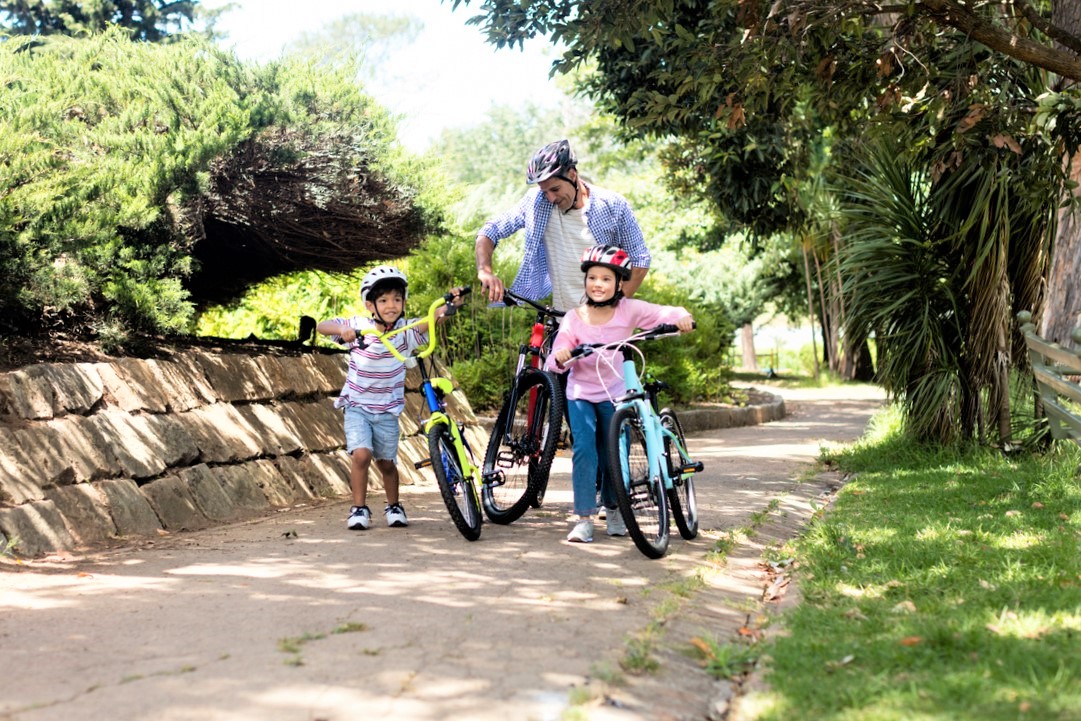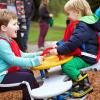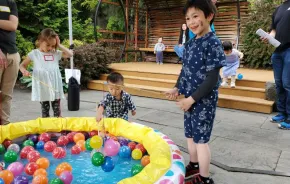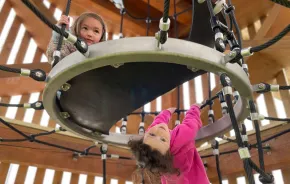
As I was running alongside my daughter’s bicycle, gripping her handlebars, teaching her how to use the brakes, I realized just how many different parts of the brain and body are required to learn to ride a bike. She was getting overwhelmed trying to pedal, balance, steer and brake. One fall on the concrete, and I feared she would give up.
As you take on trying to teach your child to ride a bicycle, it is important to gain their trust by building a sense of safety and fun every time they attempt to ride. We are a biking family, so I have a fair amount of experience teaching kids to ride bicycles — here are some of my top teaching and safety tips.
Consider your child’s learning style
Sometime between the ages of 3 and 6, your child may show an interest in learning to ride a bike. If your child is an auditory learner, they will hear everything you say, so be sure you are breaking the steps down into simple directions. A kinesthetic learner may have an easier time using their body to figure out how to balance, but may want speed before learning to turn. The visual learner will need to watch others to learn to ride. It will be helpful to point out each individual component: balancing, coasting, turning, pedaling and stopping.
Safety first
Correctly fit a bike to your child by having them stand over the top tube with both feet planted flat on the ground. There should be a couple of inches of clearance between their crotch and the top tube. The right fit will allow your child to more easily control the bike at all times.
Your child’s helmet should sit level across the middle of the forehead — line up the front edge just above their eyebrows. Tighten all straps so the clasps for the straps are under their ear lobes and the chin strap is snug. Next, ask your child to shake their head. The helmet should not move more than one inch in any direction; if it does, it’s too loose and you may need to try a different size. Tuck in pant legs and floppy shoelaces.
Seek open space
Choose an open area with no car traffic, such as a park or empty parking lot. When my daughter was learning to ride, she appreciated the soft grassy area of a local park with a slight incline. There she was able to ride down a small hill using gravity to confidently glide and steer with her feet on the pedals. She was less concerned about falling since the grass made for a softer landing. My son, on the other hand, loved the smooth pavement inside an empty tennis court, where he was able to pick up speed and learn to make wide turns.
Balance first, pedal later
Have your child first learn to scoot and coast on their bike to build confidence. Start with a balance bike or modify their bike by removing the pedals with a pedal wrench and lowering the seat. Once they learn how to coast while picking up their feet, show them how to coast with legs outstretched as counterbalances. See if your child can remain balanced while you sing a full round of “Row, Row, Row Your Boat.”
Clear steering
Learning to turn and steer is not necessarily instinctual. Your child may need a goal or an object to aim for. Place a cracker on the ground about 10 feet in front of them and ask them to run over it. This gives the child a direct target to aim for. It may take a number of tries before they squash it. Move it farther and farther away so they learn to scan ahead. Create an arc of crackers on the ground and encourage your child to try to hit each one.
Remember to rest, snack and drink water. Use this break time to reinforce your child’s successes and what they are doing right, even if it’s simply their great attitude and laughter.
Them’s the brakes
Whether your child’s bike has coaster brakes or hand brakes, stopping the bike without wobbling can be tricky. It will take a bit to figure out how much pressure is just right. A cracker on the ground can come in handy again. See if your child can stop before hitting it. Also encourage your child to take their feet off the pedals and have them ready to touch the ground before their bike has completely stopped!
Now, it’s the parent’s turn to ride
A simple game of “Follow the Leader” will allow your child to integrate their new balancing, pedaling, steering and braking skills. Create an obstacle course with those trusty crackers and be sure to make big wide turns. See who can hit the most crackers. Be silly and miss most of the crackers — how sad for you that for some reason you just can’t seem to hit as many as your child!
Cool down your big day of riding with a “slowness race.” The last person to put their feet on the ground wins. This will require your child to show off how much control he or she has developed over the course of their ride.
Where to ride around Puget Sound:
Local family biking resources:
|
Editor's note: This article was originally published in 2019 and updated for 2022.













